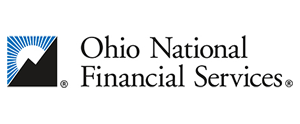401(k) account balances have gone up 93 percent, nearly double since the economic downturn in 2009, according to the latest research from the Principal Financial Group. While much of the increase reflects a rebounding market, the study found a significant increase in participation and savings rates since the market collapse, with account balances rising 17 percent in 2013 alone, to an average of $54,000.
“The economic downturn may finally be in the rear view mirror, but the lessons learned from the crisis are hopefully influencing our savings habits as a nation moving forward,” says Jerry Patterson, senior vice president of Retirement and Investor Services for The Principal. “While we still have a lot of work to do to help Americans save at more adequate levels for retirement, these numbers are a positive sign that retirement savings are moving in the right direction.”
The study, conducted by The Principal Knowledge Center, analyzed retirement plan participants savings and deferral changes among those enrolled in an employer 401(k) plan from 2008 to 2013.
More savings, more engagement
The study found a significant increase in the number of employees who are acting to increase their contributions or deferrals into their employer’s plan. The number of participants choosing to increase their contribution rates has increased almost 70 percent since 2009. The average employee-contribution rate has increased by 14 percent during the same period.
“Employees are making great strides towards signing up to save more, but employees still succumb to inertia and often set and forget their savings,” notes Patterson. “That’s one of the reasons we’re working with employers to design plans that use the power of inertia to help individuals continue to save at more adequate levels.”
Patterson says changing plan design features to help make savings more automatic can capitalize on the upward trend and accelerate overall participation and savings rates. The company recommends several key automatic plan design features, including:
- Automatic enrollment with at least 6 percent elective deferral.
- Automatic escalation of at least 1 percent per year up to 10 percent.
- Sweep all existing employees into the plan at least one time at the default deferral rate.
- Stretch the match by using a formula that incents employees to defer at higher levels in order to get the full employer match.
- Use an asset-allocation choice as the qualified default investment alternative.
For more information, visit www.principal.com.
---------
By Ayo Mseka
Editor-In-Chief






.png?width=300&height=300&name=CC%202025%20Ad%20(300%20x%20300%20px).png)
.png?width=300&height=600&name=Tax%20Talk%20Graphic%20-%20email%20tower%20(300%20x%20600%20px).png)



.png?width=300&name=NAIFA-FSP-LH%20with%20tagline%20-%20AT%20blog%20email%20ad%20(300%20x%20250%20px).png)
.png?width=728&height=89&name=2024%20Congressional%20Conference%20(728%20x%2089%20px).png)
